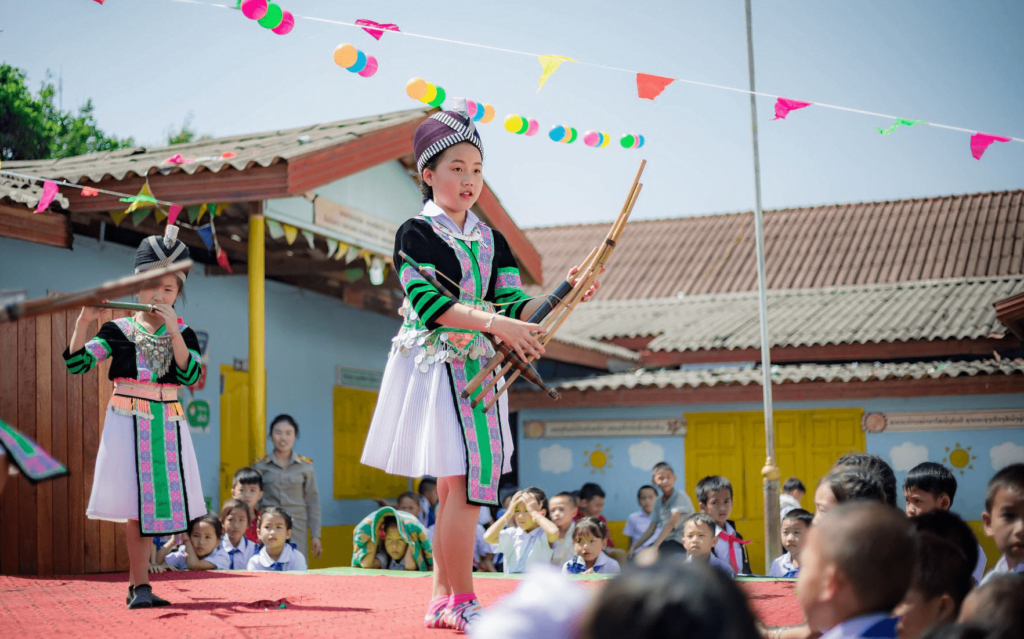
Exploring the Hmong Population in Minnesota: An In-Depth Analysis
WHY THIS ARTICLE COULD BE INTERESTING FOR YOU:
This article delves into the intriguing and significant topic of the Hmong community in Minnesota, offering valuable insights into a vibrant cultural group that plays a pivotal role in the state’s history and present. Understanding the Hmong presence in Minnesota not only enriches our knowledge of diverse communities but also highlights the importance of cultural inclusivity and coexistence. It’s an opportunity to explore how different cultures can thrive and contribute positively to a shared society, aligning with our blog’s mission of promoting blockchain’s potential to create a more inclusive and fair world.
WHAT ARE THE MOST IMPORTANT TOPICS IN THIS ARTICLE:
- Minnesota’s Thriving Hmong Population: The article reveals that Minnesota is home to a flourishing Hmong community, with a population of 95,094 Hmong residents. This statistic alone underscores the significance of this community in the state.
- St. Paul’s Status as Hmong Capital: St. Paul, Minnesota, proudly stands out as the city with the largest Hmong population in the entire United States, boasting over 36,000 Hmong residents. This fact highlights how a city can become a hub for a particular culture and community.
- Shifts in Hmong Communities: The article discusses intriguing shifts in the distribution of Hmong residents within the Twin Cities, particularly in St. Paul’s Frogtown neighborhood, which has historically been known for its high Hmong population.
- Growth of Suburban Hmong Communities: An important trend highlighted is the growth of Hmong communities in the suburbs surrounding the Twin Cities, emphasizing the community’s resilience and adaptability.
- Hmong Populations Across Minnesota: Beyond St. Paul, various other Minnesota cities and counties are home to significant Hmong populations, contributing to the diversity and cultural richness of the state.
- Minnesota’s Unique Hmong Community: Minnesota’s Hmong community stands out for its unique sense of unity and belonging, showcasing the positive impact of cultural integration and inclusivity.
- A History of Resettlement: The article traces the history of the Hmong community in Minnesota, from their expulsion from Laos in 1975 to their subsequent resettlement in the Twin Cities. This narrative underscores the community’s resilience and determination to build a better life.
Minnesota has long been a hub for Hmong culture and community, but have you ever wondered just how many Hmong people call this state their home? In this article, we’ll dive into the numbers and trends that define the Hmong population in Minnesota.
The Hmong Presence in Minnesota
Minnesota is home to a thriving Hmong community, with a total population of 95,094 Hmong residents. What’s fascinating is that more than half of these individuals reside in Ramsey County, making it the largest concentration of Hmong in the entire nation. These numbers come from a recent analysis, shedding light on the remarkable Hmong presence in Minnesota.
St. Paul: The Hmong Capital of America
St. Paul, Minnesota, proudly wears the crown as the city with the largest Hmong population in the United States. With over 36,000 Hmong residents, it surpasses all other cities, with Fresno, California, trailing far behind. These statistics have been meticulously compiled from the U.S. Decennial Census by the Hmong Cultural Center, located on University Avenue in St. Paul.
Shifting Hmong Communities in the Twin Cities
While St. Paul maintains its status as the Hmong capital, there have been interesting shifts in the distribution of Hmong residents within the Twin Cities. For several decades, St. Paul’s Frogtown neighborhood boasted census tracts with over 1,000 Hmong residents. However, the latest data shows that this is no longer the case. Nevertheless, the neighborhood still accommodates more than 2,500 Hmong residents.
The Rise of Suburban Hmong Communities
One noteworthy trend is the growth of Hmong communities in the suburbs surrounding the Twin Cities. Hmong residents have become increasingly visible in St. Paul’s East Side and North End neighborhoods. Some census tracts on the East Side even exhibit growth in their Hmong population since the 2010 analysis. For example, a census tract north of Arlington Avenue and east of English Street now houses more than 1,800 Hmong residents.
Mark Pfeifer, the program director at the Hmong Cultural Center, noted, “There are few other cities in the U.S. (primarily Fresno and Sacramento are the other ones) that have any census tracts with Hmong populations greater than 1,000.”
Hmong Communities Beyond St. Paul
While St. Paul takes the lead, other cities in Minnesota are home to significant Hmong populations. Brooklyn Park hosts approximately 9,100 Hmong residents, while Minneapolis accommodates 6,900. Maplewood and Brooklyn Center are also home to substantial Hmong communities, with 5,400 residents. Additionally, Oakdale, Coon Rapids, Woodbury, and Blaine each have Hmong populations ranging from 2,600 to 2,000 residents.
Hennepin County and Beyond
After Ramsey County, Hennepin County is the next prominent residence for Hmong communities, with 24,000 Hmong residents. Anoka and Washington counties also play host to roughly 8,000 residents each, while Dakota County is home to another 2,100 Hmong individuals.
Minnesota vs. California: A Unique Hmong Presence
Although California boasts the largest total number of Hmong individuals in the nation, with more than 107,000 Hmong residents, Minnesota’s Hmong community stands out for its tight-knit nature. In Minnesota, the Hmong community has found a unique sense of unity and belonging.
A History of Resettlement
The Hmong community in Minnesota has a rich history dating back to their expulsion from Laos in 1975. Over the years, Hmong residents have relocated from refugee camps in Thailand and have been arriving in the Twin Cities in five significant waves, with the last wave occurring in 2004. This journey and settlement have shaped the Hmong community in Minnesota in distinct ways.
Mark Pfeifer, the program director at the Hmong Cultural Center, has revealed that more comprehensive insights into Hmong demographic trends across the nation will be published in the Hmong Studies Journal in early 2024. Stay tuned for a deeper understanding of this vibrant and resilient community.
In conclusion, Minnesota’s Hmong community is a testament to the rich tapestry of cultures that make up the state. With a significant presence in Ramsey County and St. Paul leading the way, the Hmong community continues to grow and evolve, leaving an indelible mark on the state’s history and future.









Responses